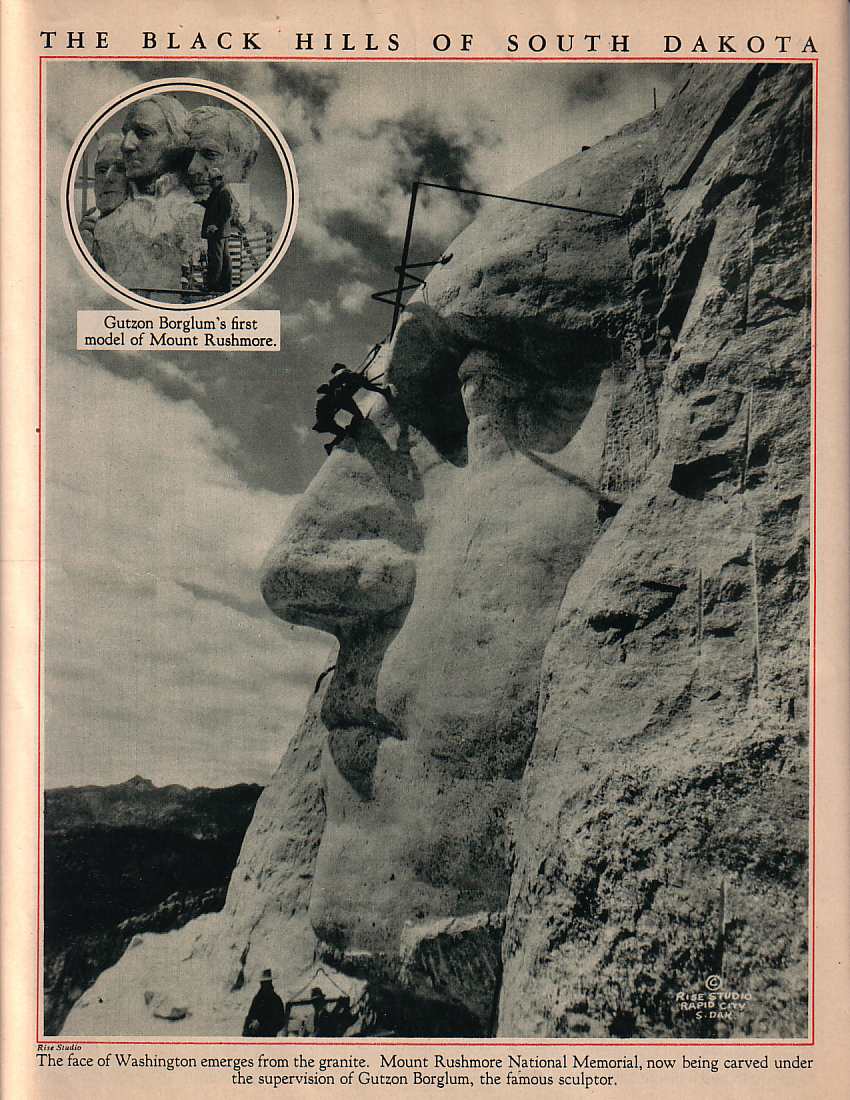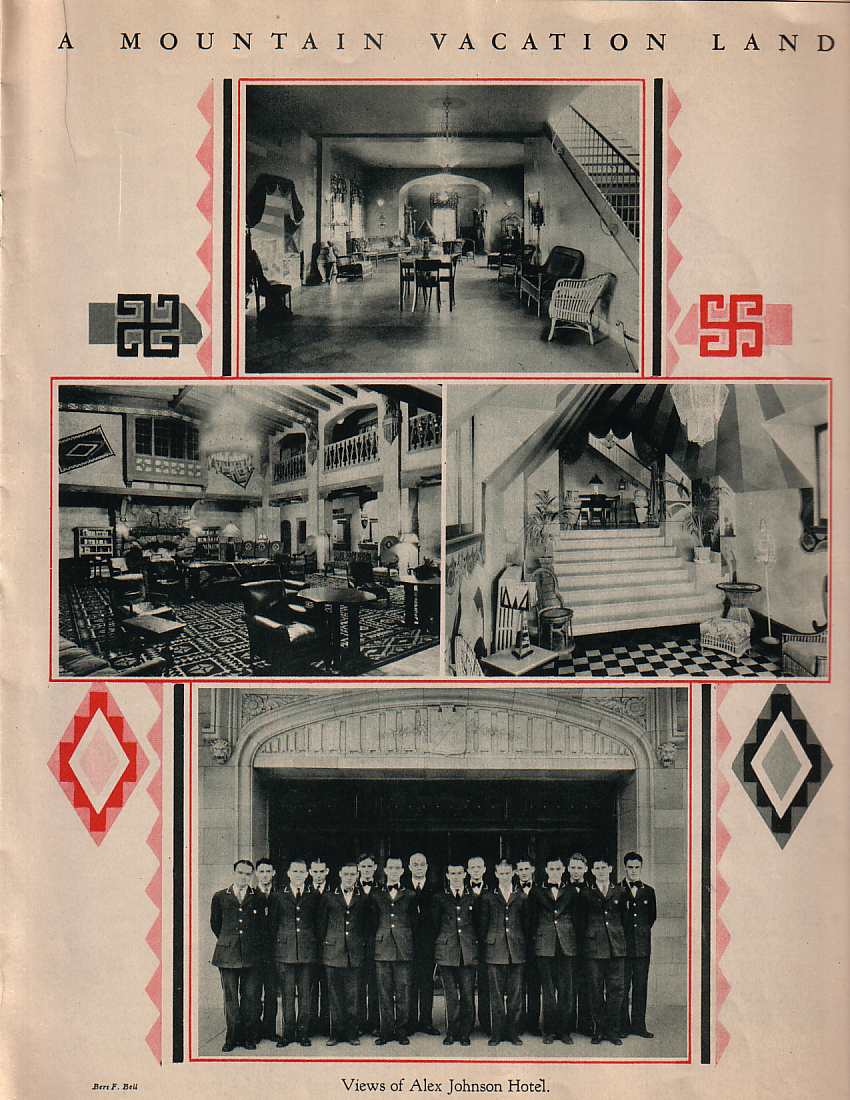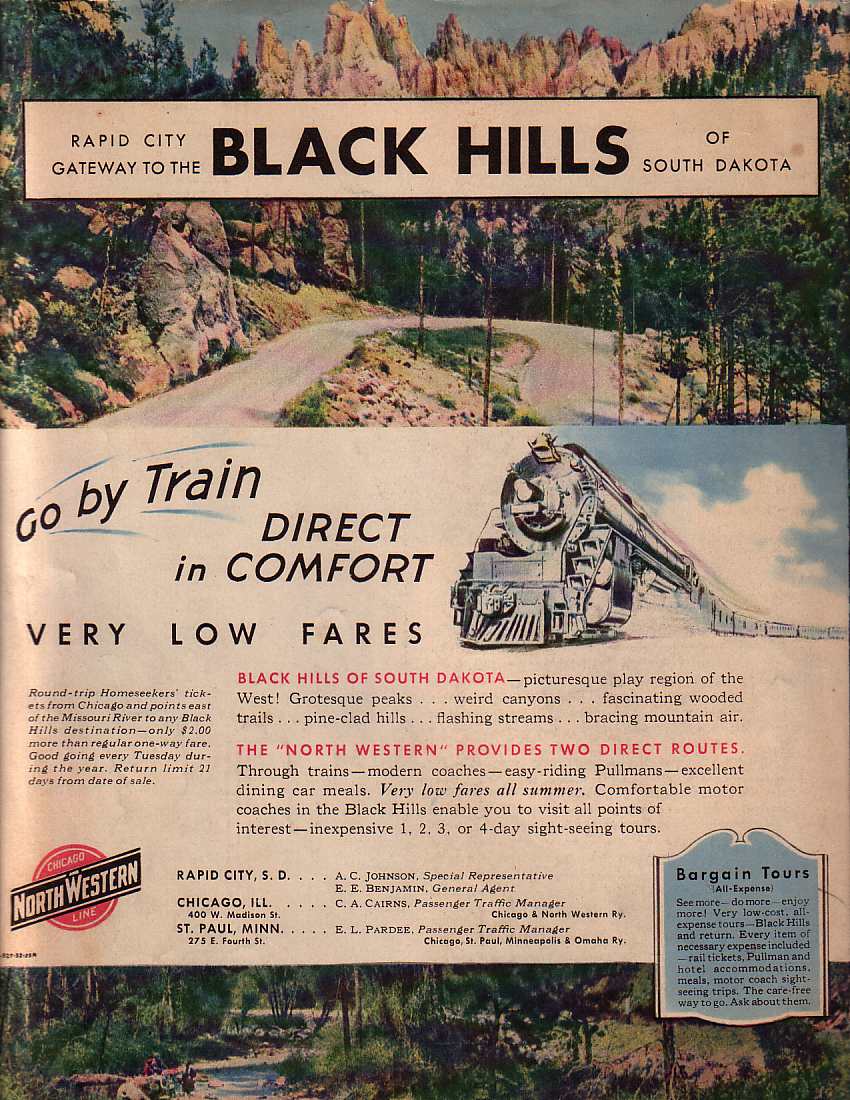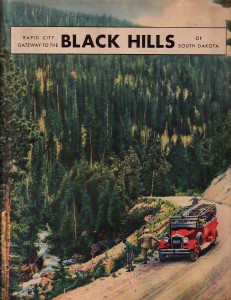 This is one of a big stack of travel brochures that I acquired when I was about 10. I don’t remember where I got them, but I do remember being fascinated by the oldness of them. I still am, so I figured they would make good post fodder.
This is one of a big stack of travel brochures that I acquired when I was about 10. I don’t remember where I got them, but I do remember being fascinated by the oldness of them. I still am, so I figured they would make good post fodder.
Let’s start off with Rapid City, Gateway to the Black Hills of South Dakota, copyright 1932 by the Rapid City Chamber of Commerce. This is a full-size magazine-style brochure that touts the many delights of the Black Hills and features some spectacular double-page spreads (which, unfortunately, my scanner is too small to handle). The front cover brings us right into the period, with its bright red tourist bus, a woman in a pleated skirt and heels taking a photo with a box camera (viewfinder on the top of the camera), and a man wearing a cap apparently fleeing down the road. The scenery is lovely, but it looks like this photo, like many of the color photos, has had extra color laid on with a heavy hand. One interesting compositional touch was the photo editor’s decision to crop the photo in such a way that a tree and a dead tree trunk run vertically parallel to the spine of the book, blocking the diagonal movement of the dirt road but also looking uncannily like a printing flaw or a bad crease.
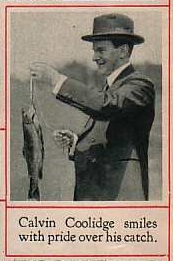 According to the brochure, President Calvin Coolidge and his wife spent the summer of 1927 in the state game lodge in Custer State Park. Coolidge was out of office by the time this brochure came out, but I guess having a president pick your state for his vacation getaways is something of a feather in the cap. I never realized how handsome he was until I saw this picture—I picture all presidents of that era as portly and gray-haired. Coolidge died in 1933 of a heart attack.
According to the brochure, President Calvin Coolidge and his wife spent the summer of 1927 in the state game lodge in Custer State Park. Coolidge was out of office by the time this brochure came out, but I guess having a president pick your state for his vacation getaways is something of a feather in the cap. I never realized how handsome he was until I saw this picture—I picture all presidents of that era as portly and gray-haired. Coolidge died in 1933 of a heart attack.
Mount Rushmore was under construction at the time, and it must have been pretty cool to watch. Here’s a fun Mount Rushmore fact I learned from Wikipedia: The sculptures were supposed to be from the waist up, but they ran out of funding. Lack of funds was also the excuse for not including a proposed fifth head, that of Susan B. Anthony. Eleanor Roosevelt herself championed the inclusion of the suffragist pioneer, but Congress shot it down by passing a bill mandating that money only be spent on the heads that were already in progress.
The Homestake Mine, started by George Hearst (William Randolph’s father) it was at one time the biggest gold mine in the Western Hemisphere, and it was a key element in the Hearst fortunes. In the 1960s, a neutrino detector was installed in the mine, and it was there that solar neutrinos were first observed. While mining operations shut down in 2002, the mine was selected as a site for a new neutrino detector. Unfortunately, the National Science Foundation stopped funding it in 2010, bringing those plans to an end. Again with the lack of funds!
Here’s Harney Peak, the highest point in the Black Hills. The wooden lookout tower was replaced in 1938 with a granite one (built by the Civilian Conservation Corps). Here’s a photo of the newer tower taken from a similar angle, and here’s a clearer photo of the old tower, which was held in place by steel cables.
The striking-looking Alex Johnson Hotel is, I am happy to say, still in operation. Six presidents (including Coolidge) have stayed there, and it is rumored to be haunted. Here’s a look at the interior:
And of course, no trip to the West is complete without colorfully attired Native Americans to gawk at.
Here’s a story about that. My uncle (by marriage) was a member of the Navajo tribe and lived on the reservation in Arizona. He once showed me a photo of himself in younger days, doing a traditional tribal dance, wearing feathers and fringe. “But I thought Navajos didn’t wear feathers,” I said. “We didn’t,” he responded, “but the Navajo costumes were boring so we bought Plains Indians costumes instead. We got them through a mail order catalogue.” Remember, culture is a living, changing thing!
Finally, here’s the back cover, and a reminder that the best way to get anywhere, even South Dakota, is on a train:
